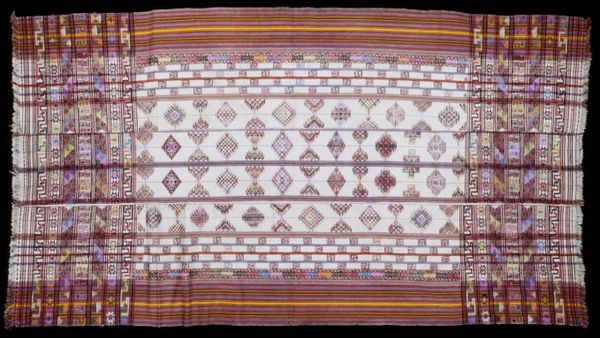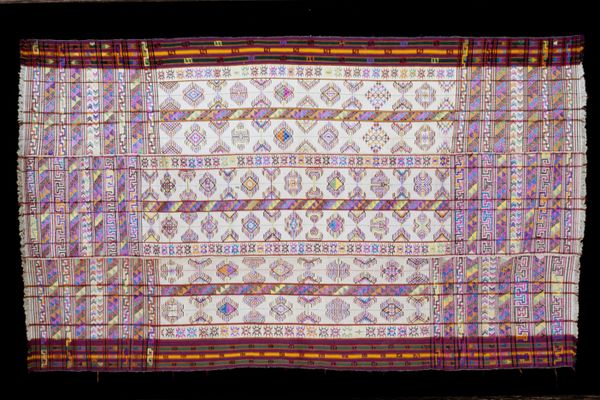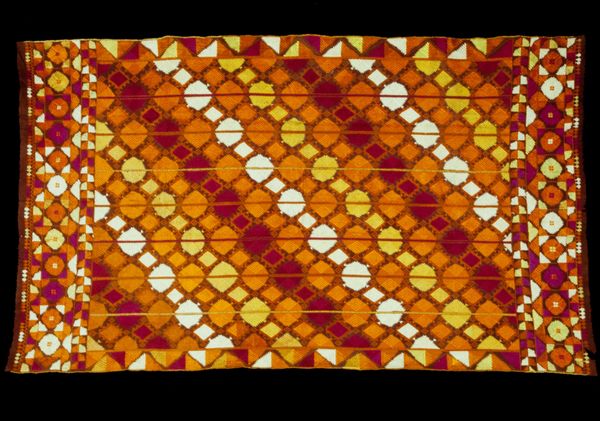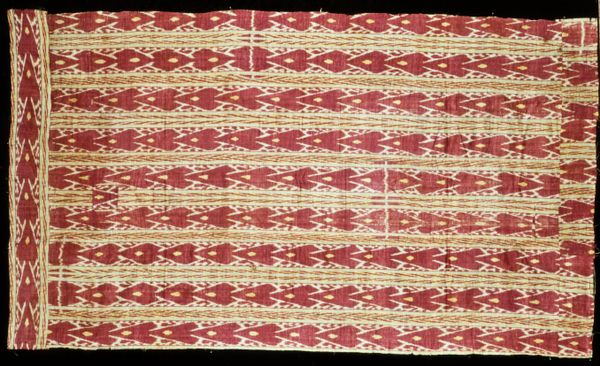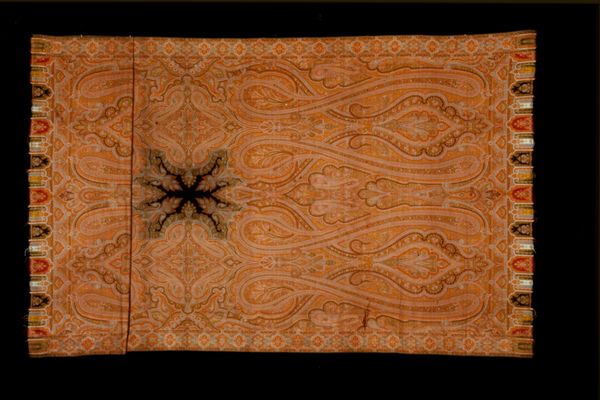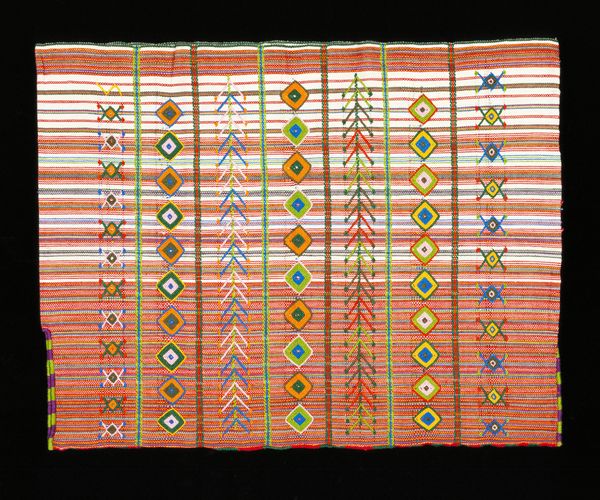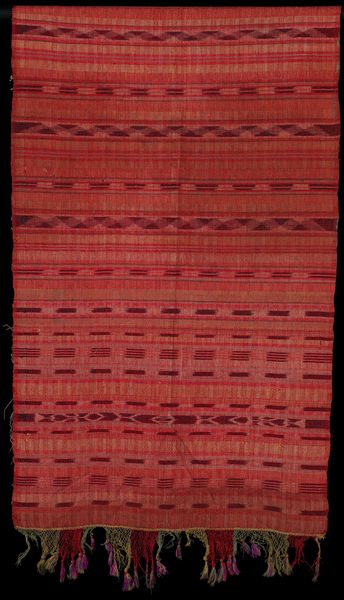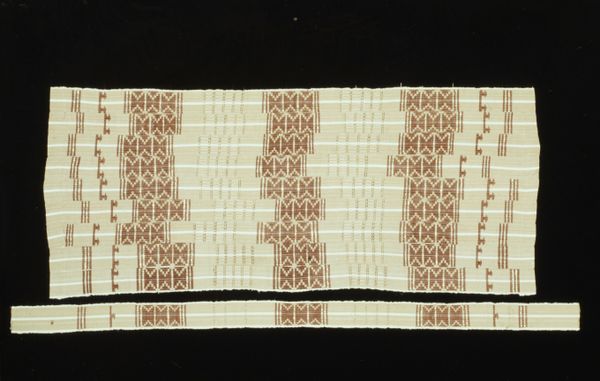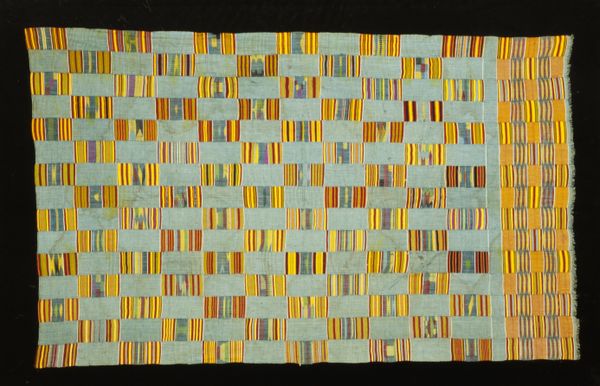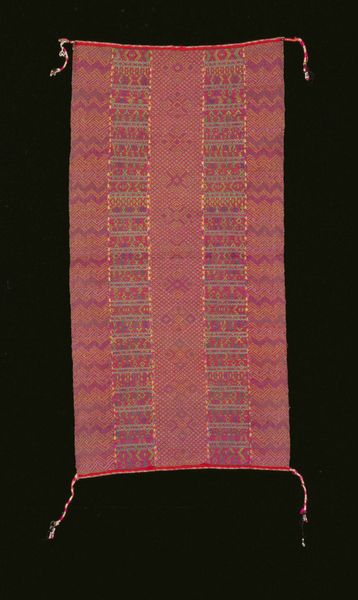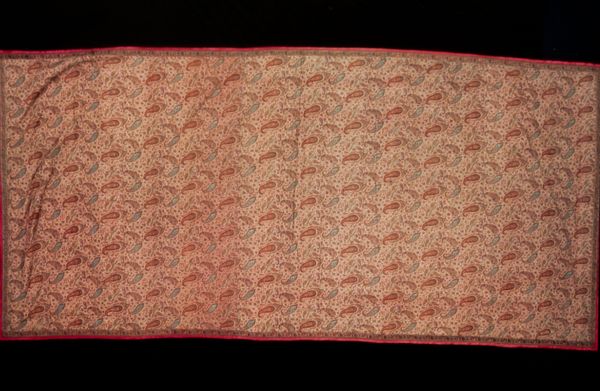
fibre-art, weaving, textile
#
fibre-art
#
weaving
#
textile
#
geometric
Dimensions: 65 x 36 in. (165.1 x 91.4 cm)
Copyright: Public Domain
Curator: Editor: So, we’re looking at a “Sarong” from around the 20th century. It's a woven cotton textile, and I find the combination of geometric patterns and those almost whimsical elephant figures really striking. What's your take on it? Curator: The juxtaposition is compelling, isn’t it? This piece immediately brings to mind questions of cultural exchange and appropriation. Textiles like this one were often commodities in colonial contexts. So how might the "orientalism" in the piece reflect unequal power dynamics? Do you think it's celebrating a culture or exoticizing it? Editor: That's a perspective I hadn't considered. The elephant figures now feel less whimsical and more… symbolic of that power dynamic you mentioned. Curator: Precisely! Consider how these "exotic" motifs catered to Western tastes while simultaneously undermining the indigenous artistry and meanings embedded in the textile traditions. Can you see echoes of this tension in contemporary debates about cultural representation? Editor: I do. It's about who has the power to tell the story and profit from it. This sarong is visually appealing, but also seems to carry the weight of history, and unequal exchange. Curator: Exactly! Recognizing that historical context lets us see beyond the surface design. These objects become potent reminders of colonialism's enduring legacy and encourages dialogue around representation and equity in the art world and beyond. Editor: This makes me rethink how I engage with art from different cultures. Thanks, it's much to think about. Curator: And it's by engaging with those thoughts, and encouraging uncomfortable dialogues, that we can try and decolonise not only art history, but how we perceive the world too.
Comments
No comments
Be the first to comment and join the conversation on the ultimate creative platform.
